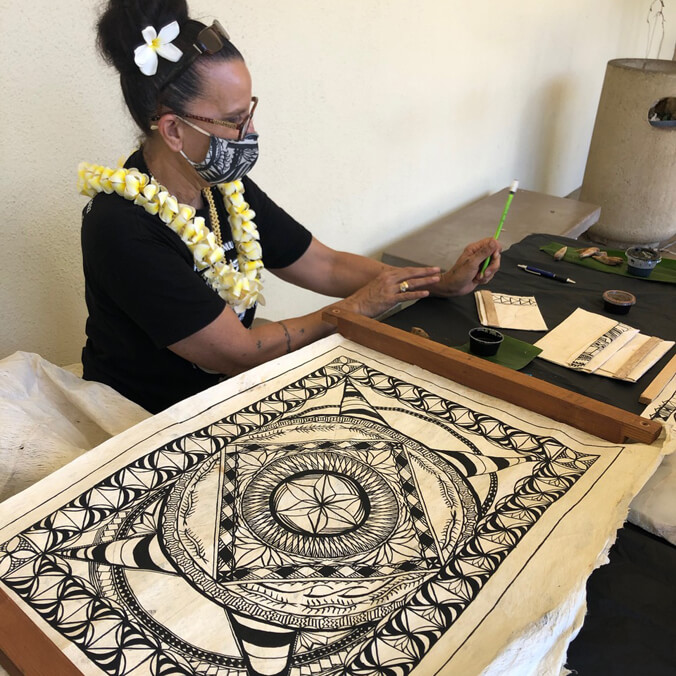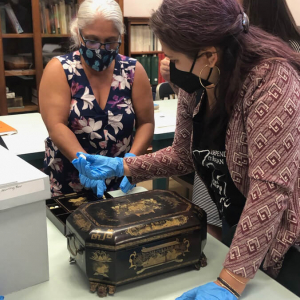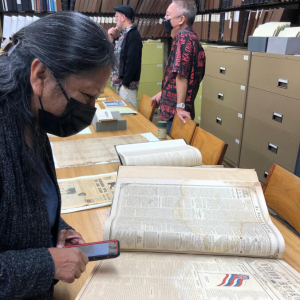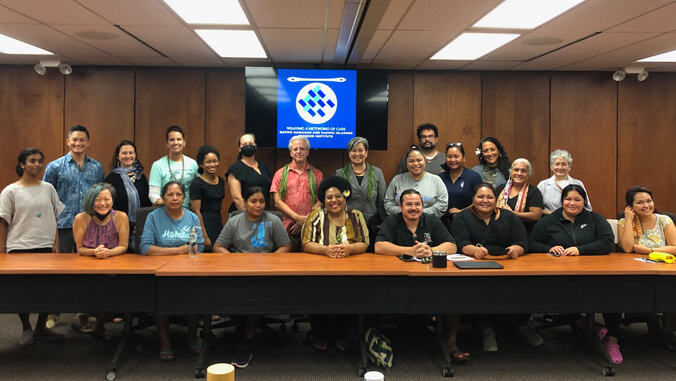
A new institute aimed at training early to mid-career Native Hawaiian and Pacific Islanders who work in museums and cultural heritage centers launched its inaugural four-week cohort on July 4. 20 individuals from Hawaiʻi and across the Pacific—including Saipan, American Samoa and the Marshall Islands—are participating in Weaving a Net(work) of Care for Oceanic Collections: A Native Hawaiian and Pacific Islander Museum Summer Institute. Jointly hosted by the Department of American Studies at the University of Hawaiʻi at Mānoa and the East-West Center (EWC), the institute focuses on museum management and collections care for institutions, professionals and communities that care for Oceanic collections.

Various educational workshops—preservation management, archival storage, gallery deinstall, disaster planning and more—have been presented by some of Hawaiʻi’s top curators at Bishop Museum, ʻIolani Palace, UH Mānoa’s Hamilton Library, Hawaiian Mission Houses and EWC.
“This project has exceeded our wildest expectations,” said Noelle Kahanu, a project manager at the institute. “We were inspired by an EWC museum institute that occurred in the early 70s, and the National Endowment for the Humanities supported our reinvisioned concept. We wanted to move beyond Western best practices and bring in museum experts and cultural leaders who could share their Indigenous perspectives. We wanted to demonstrate how you could care for your collections without a $1,000 vacuum cleaner or how to repair torn documents and maps.”
Community enrichment

Pamela Alconcel is soaking in every ounce of critical ʻike (knowledge) she can to take back to her home island. The Lānaʻi native mentors youth at the Lānai Culture & Heritage Center (LCHC) where she helps keiki explore the rich history and significant sites of the island. Alconcel will be taking on a big project this year at LCHC as her team works to digitize archival collections to make it widely accessible to the community.
“To be able to collaborate and learn from others from the Pacific region, the expertise of those from the museum studies program and museum personnel, has been maikaʻi loa (excellent),” said Alconcel who has also worked for the UH Maui College Lānaʻi Education Center for the past 18 years.
Participants will install a collective exhibit at the EWC gallery to showcase their expertise. The exhibit will be open to the public on Sunday, July 31, 2–3:30 p.m.
The institute was made possible by a $350,000 grant from the National Endowment for the Humanities in 2021. Due to the COVID-19 pandemic, the in-person museum institute was postponed and re-envisioned to include a six-month virtual program which began on January 24 and concludes with the in-person portion this summer at EWC.
- Related UH News story: New institute builds next generation of Pacific Indigenous museum professionals, February 23, 2022
Refreshing a vision
The training cohort is inspired by a program EWC held in 1975 to assist communities in “conserving their cultural heritage and maintaining their cultural identities.” More than a dozen participants from throughout the Pacific received six months of hands-on training in ethnomusicology, museology and archives management.
Inspired by this history, the American studies department at UH Mānoa approached EWC about offering something similar. Through consultation with the Pacific Islands Museums Association, a new focus and format was developed.


